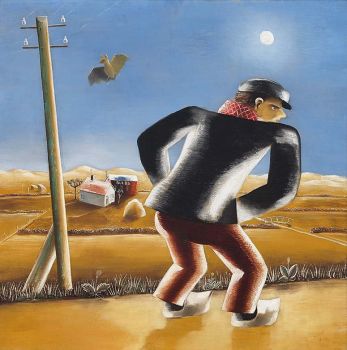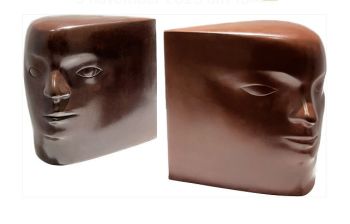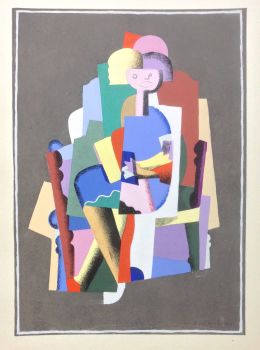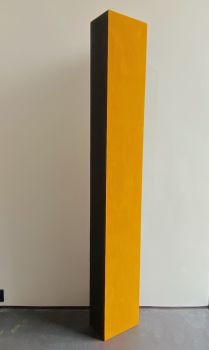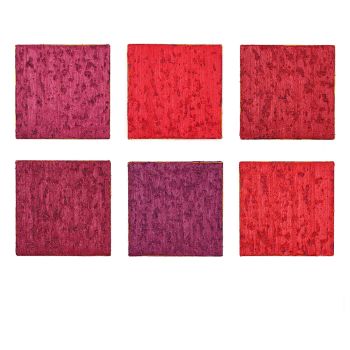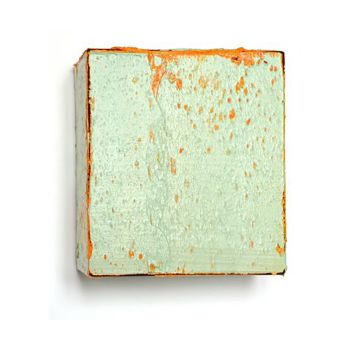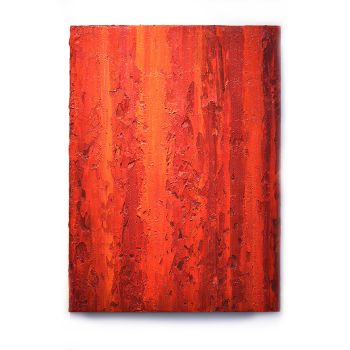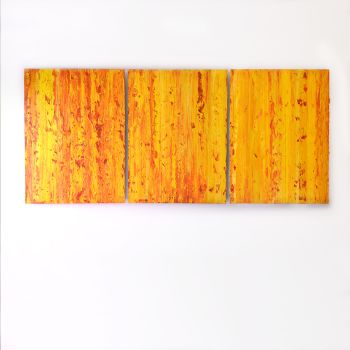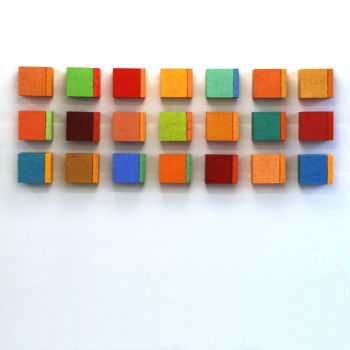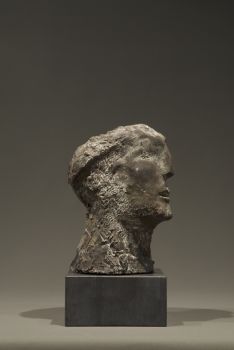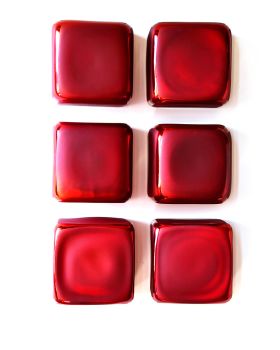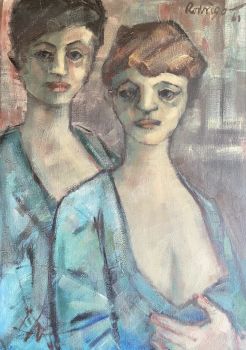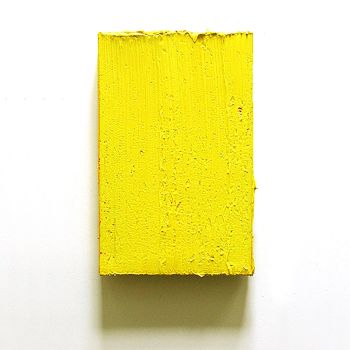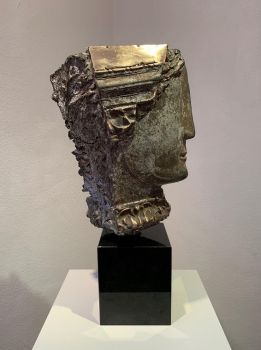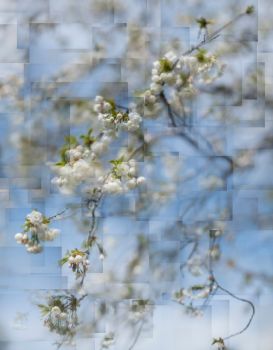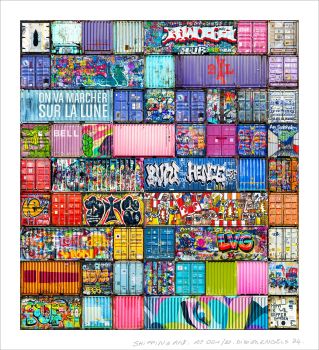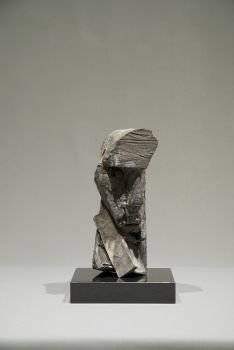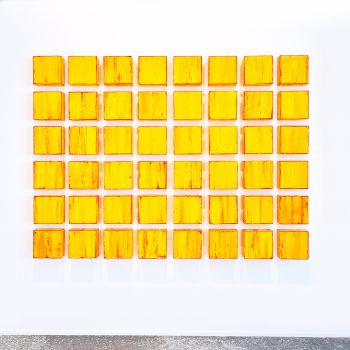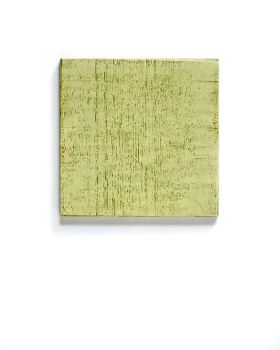The Influence of Cubism on Modern Art
Everyone will probably recognize the apparently strange, fragmented paintings, often with primary shapes and colours. There is a good chance that this was a cubist work of art. At the beginning of the last century, Cubism left a lasting impression on later and contemporary art movements and architecture. In this article we will explain how Cubism originated, what makes Cubism special and what are the main characteristics of Cubism. We also indicate where you can view and buy original Cubist art, such as paintings and sculptures.
What exactly is Cubism?
Cubism can be considered as one of the four major painting styles alongside Dadaism, Expressionism and Abstract art in 20th century European painting. Cubism wants to be a direct record of what goes on in our heads when we look at things.
Cubism, as the word 'cube' implies, is about the reduction of an image to geometric figures, such as a cube, cone, sphere or pyramid. The Cubist art movement took an artistic abstraction to a new height through a mathematical analysis of the recorded with the subsequent decomposition into its geometric forms.
Hence often the bizarre leaps of thought, the fragmentation, the collages, the apparently incorrect colors in cubist works of art. Cubism as an art movement had no underlying theory or manifesto of its own.
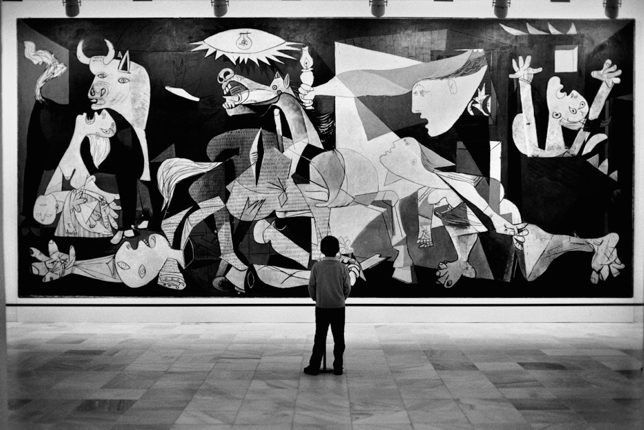 One of the most famous Cubist paintings 'Guernica', painted by Pablo Picasso in 1937
One of the most famous Cubist paintings 'Guernica', painted by Pablo Picasso in 1937
How did Cubism originate?
From an art historical point of view, we can say that Cubism arose in the early 20th century as a reaction to intuitive Fauvism with its bright colors and flat shapes. Cubism, on the other hand, moved in the direction of order, reflection and construction and made use of three-dimensionally represented forms.
An important precursor of Cubism was above all Paul Cézanne with his works and artistic views. A well-known statement by Paul Cézanne is the statement that 'all forms in nature are in fact built up from a number of archetypes such as sphere, cone, cylinder and cube'.
In Paul Cézanne's work, the classical perspective was abandoned for the first time and colors were used to create the feeling of depth. Bright colors are in the foreground and dark colors in the background. This can be clearly seen in the series Mont Sainte Victoire, which was shown at an exhibition in 1907 with his works of the last ten years.
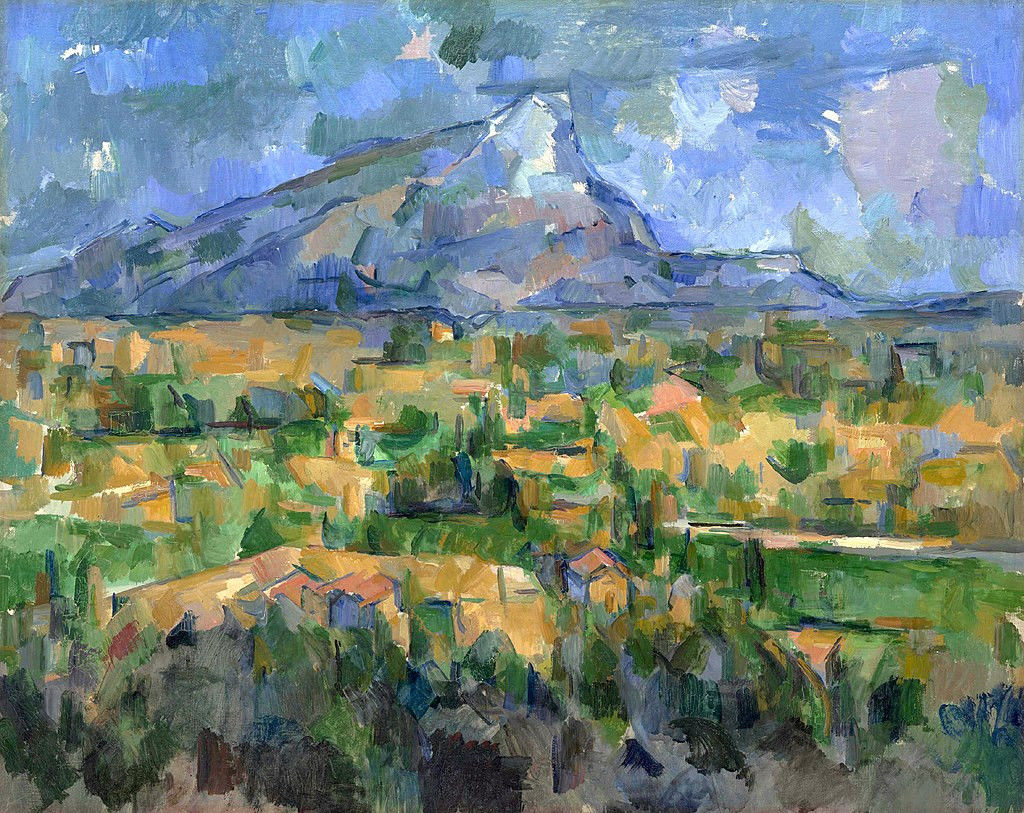 One of the first Cubist paintings by Paul Cézanne - Montagne Saint-Victoire 1904
One of the first Cubist paintings by Paul Cézanne - Montagne Saint-Victoire 1904
Other decisive founders of Cubism were Pablo Picasso and Georges Braque. They were inspired by the Eastern and African culture and began to paint in bright colours. Picasso and Braque rejected the style of painting that made illusionistic attempts to represent people, landscapes and objects in a spatial and plastic way.
Pablo Picasso's painting Les Demoiselles d'Avignon definitively paved the way for Cubism in painting. Picasso was inspired for this by the African masks he saw in the Musée de l'Homme. The canvas depicts five prostitutes, whose bodies he simplified into geometric shapes.
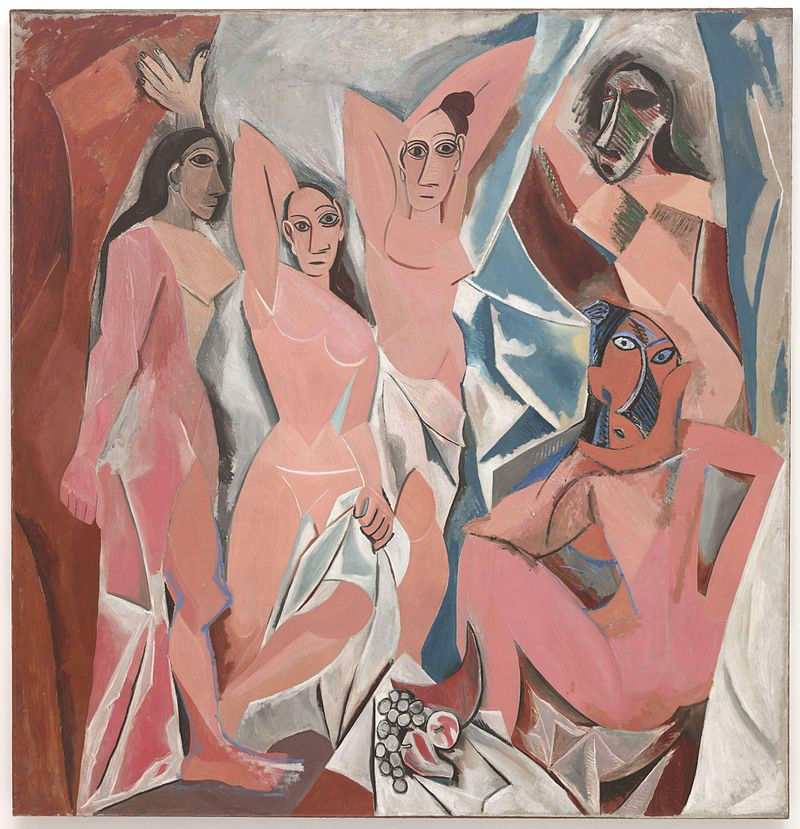 The famous Cubist artwork 'Les Demoiselles d'Avignon', Pablo Picasso, 1907, oil on canvas, 244 x 234 cm
The famous Cubist artwork 'Les Demoiselles d'Avignon', Pablo Picasso, 1907, oil on canvas, 244 x 234 cm
George Braque, a close friend of Picasso, further shaped Cubism. He concentrated his creativity on the use of materials, textures and collages. However, after the exhibition of Les Indépendants, in Paris on 25 May 1910 the French critic Louis Vauxcelles in the magazine Gil Blas described the works of Georges Braque as 'bizarreries cubiques'.
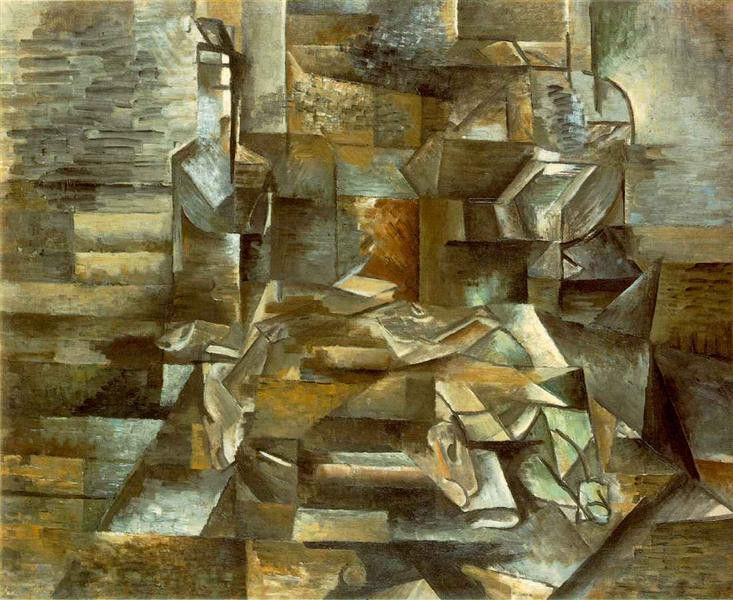 Cubist painting 'Bottle and Fishes', Georges Braque, 1910 - 1912
Cubist painting 'Bottle and Fishes', Georges Braque, 1910 - 1912
Characteristics and principles of Cubism
The most characteristic of Cubism is the simplification of everything. Cubists try to incorporate this into a painting. Below is a summary of the first name set characteristics of Cubism.
Use of geometric figures
As mentioned earlier, almost all forms in Cubism are reduced to angular, cube-like basic shapes, the reduction of an image to geometric figures, such as a cube, cone, sphere or pyramid.
Fragmentary flat plane
In Cubism, no distinction is made between three-dimensional shapes that bend towards the viewer and shapes that have to bend away from the viewer. Cubists flatten shapes and then multiply them. The forms seem to fall apart into small fragments. the painting is a flat surface covered with shapes, lines and colours.
Shifting views
Cubism mainly uses shifting points of view. In other words, the spatiality of 'things' is not represented in perspective from one point of view. For example, a table can be viewed from different angles. From above if one is standing, from the side if one is sitting, or from below if one wants to pick up something from the floor.
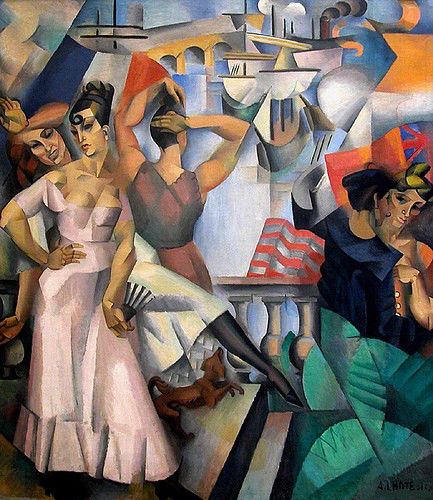 A colorful Cubist painting by André Lothe, Lescale, 1913
A colorful Cubist painting by André Lothe, Lescale, 1913
Light from different sides
In Cubism, all surfaces (or facets) often had a light and a shadow side. Each fragment seems individually illuminated. This creates a playful kind of spatiality.
Use of color
Color wasn't that important. In the beginning, hardly any bright colors were used, sometimes only grayish, ocher and brown tones. Color did, however, become more important at a later stage.
Attention to the residual form
In addition to the main form drawn, the residual form is also important in Cubism. Residual form is often the white that remains on a drawing. The composition often consists of a succession or accumulation of fixed form parts, usually arising from the center of the painting, growing towards the outside or the periphery.
Recurring topics
It is striking that Cubism mainly painted landscapes, human figures and especially still lifes.
Movements within Cubism
Within Cubism we consider 3 main movements.
Geometric Cubism (1907–1909)
Geometric Cubism ran from 1907 to 1909 with Cézanne's strong influence on Braque's landscapes and Picasso's African sculpture-inspired technique. Braque and Picasso abandoned linear perspective once and for all, thinking that this was ultimately just a way of seeing. The objects show a far-reaching stylization: the paintings initially seem to be made up of geometric shapes.
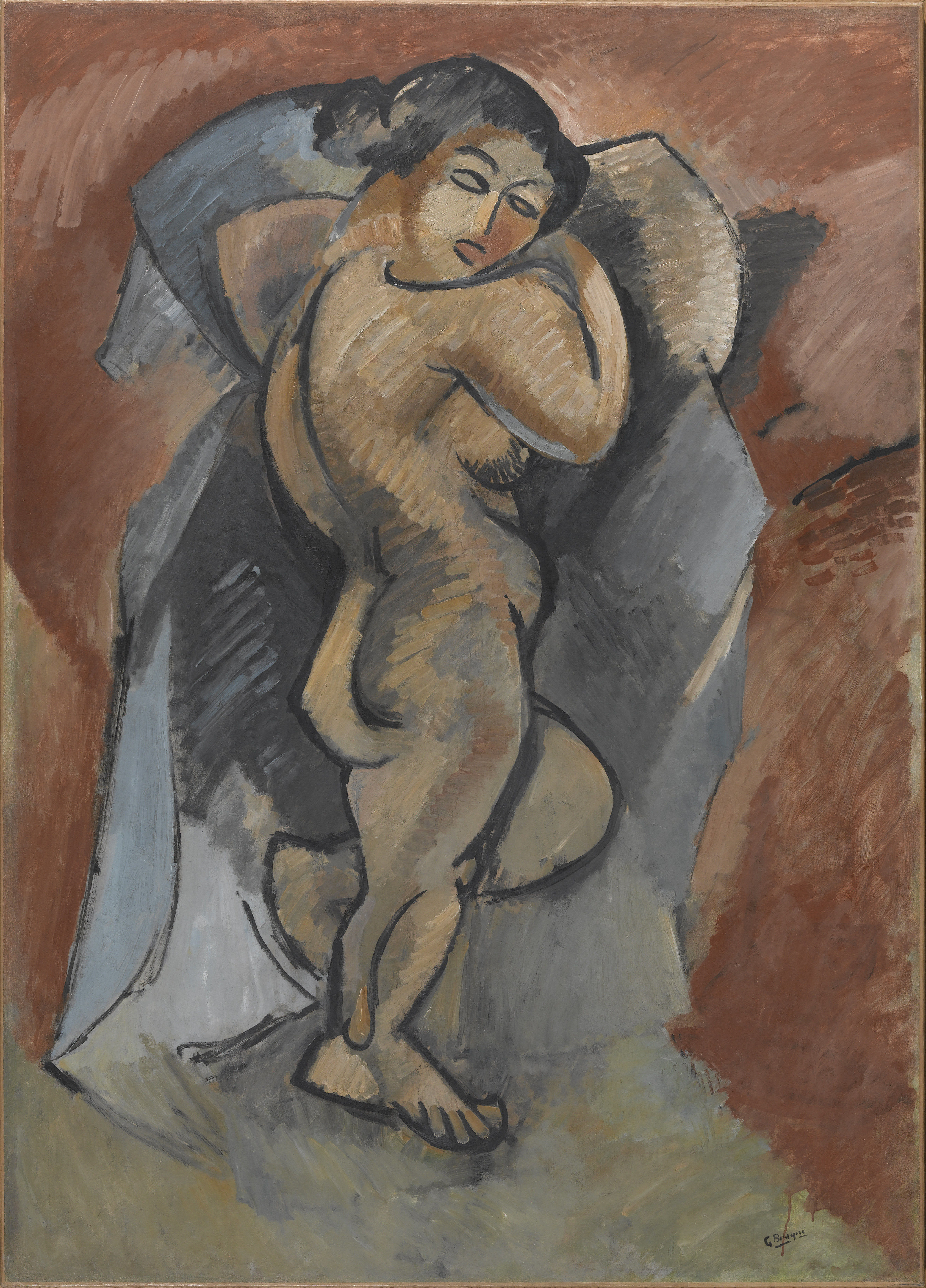 Example of Geometric Cubism, Georges Braque Grand Nu, 1907-1908
Example of Geometric Cubism, Georges Braque Grand Nu, 1907-1908
Analytical Cubism (1910–1914)
Analytical Cubism lasted from 1910 to 1914. During this period, Picasso's and Braque's picture of reality shattered into small fragments. The solid forms of the objects are broken, dissected into all facets and not limited to the randomly visible facets alone, by depicting them next to and often over each other.
 Example of an analytic Cubist painting, Portrait d'Ambroise Vollard, 1909-1910, Pablo Picasso
Example of an analytic Cubist painting, Portrait d'Ambroise Vollard, 1909-1910, Pablo Picasso
Synthetic Cubism (1913 - circa 1920)
After 1913, synthetic cubism wanted to repair the break with reality. Not by going back to its original form, but by rendering the characteristic outline and the matter of objects as realistically as possible.
In the later 'synthetic cubism' the forms became simpler, the colors brighter and experiments were made with new stylistic forms such as collages in which paper and newspapers are part of the painting.
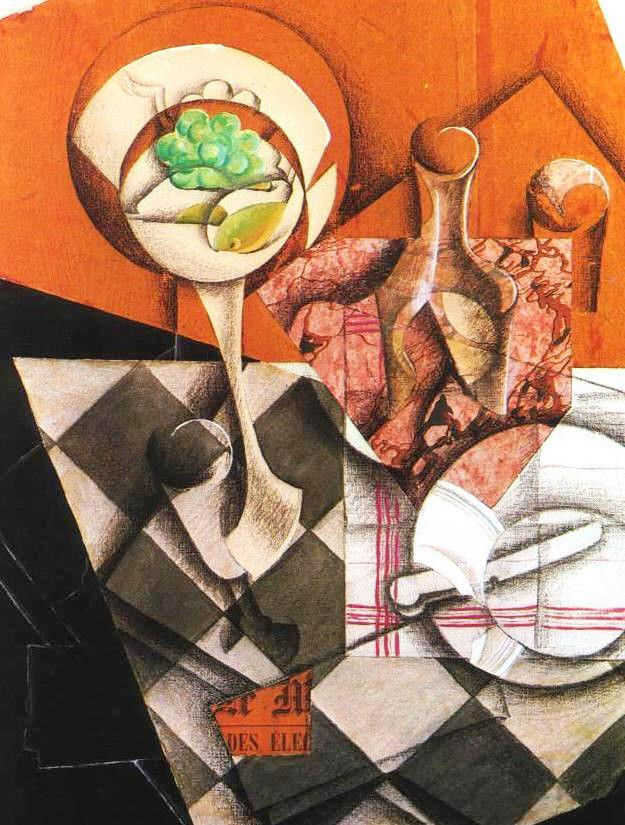 Example Synthetic Cubism, Fruit bowl and decanter, 1914, Juan Gris
Example Synthetic Cubism, Fruit bowl and decanter, 1914, Juan Gris
Cubism and influence on other art movements
As important as Expressionism has been for the further development of 20th century art, without the new way of seeing Cubism we would not be talking about Futurism, Dadaism, Surrealism, Constructivism, certain forms of abstract art and Kinetic art. nor of conceptual art
Influence on architecture
Incidentally, the cubist architectural style has not taken on grand forms within architecture. The Cubist elements in the buildings were mainly intended for decoration. Especially in Prague Cubist architecture developed between 1910 and 1925 (including Josef Gočár). In Vienna is the cubist Wotrubakerk by Fritz Wotruba.
Yet we can still see the influence of Cubism on the architecture and architectural style of the past and in contemporary designs. Below are a number of examples in the image, such as from left to right: Fallingwater in Mill Run, Het Raadhuis in Hilversum, The Rietveld-Schröderhuis in Utrecht and the Wotruba Church in Vienna.
 Examples of cubism in architecture
Examples of cubism in architecture
Influence on sculpture and literature
Cubism also had its influence in sculpture. Sculptors Alexander Archipenko, Raymond Duchamp-Villon, Jacques Lipchitz, Ossip Zadkine and of course Pablo Picasso are the most important masters of it.
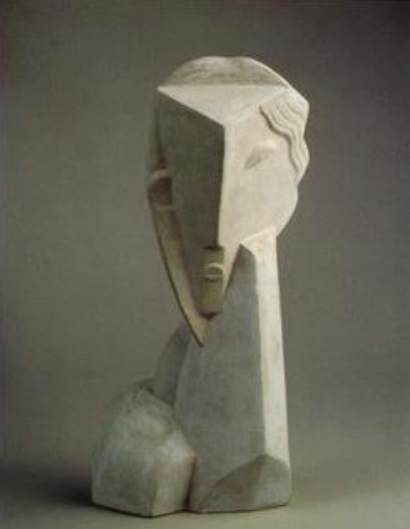 Cubist sculpture by Henri Laurens, 'Women's Head' (1920), Musée National d'Art Moderne, Paris
Cubist sculpture by Henri Laurens, 'Women's Head' (1920), Musée National d'Art Moderne, Paris
In literature we mainly find Cubism with the Flemish poet Paul van Ostaijen. In his poetic oeuvre, Van Ostaijen develops from expressionism (showing all emotion) via cubism (letting the world speak for itself) to the great detachment he finds in abstract art.
Where can you view Cubist artwork?
The most important museums in which the development of Cubism can be clearly seen are the Center Pompidou in Paris and the Museum of Modern Art in New York. Pablo Picasso also has a whole series of museums of his own: in Paris, in Malaga, in Barcelona and in Antibes.
In the Netherlands, the Kunstmuseum in The Hague regularly has cubist art, Museum de Fundatie in Zwolle and the Stedelijk Museum in Amsterdam.
Where can you buy original cubist art?
If you want to buy original cubist art, it is important to know that the work is genuine and has a good provenance. At Gallerease we only sell curated art from renowned galleries and art dealers. See also the following link for our online overview of available Cubist works of art, such as paintings and sculptures.


